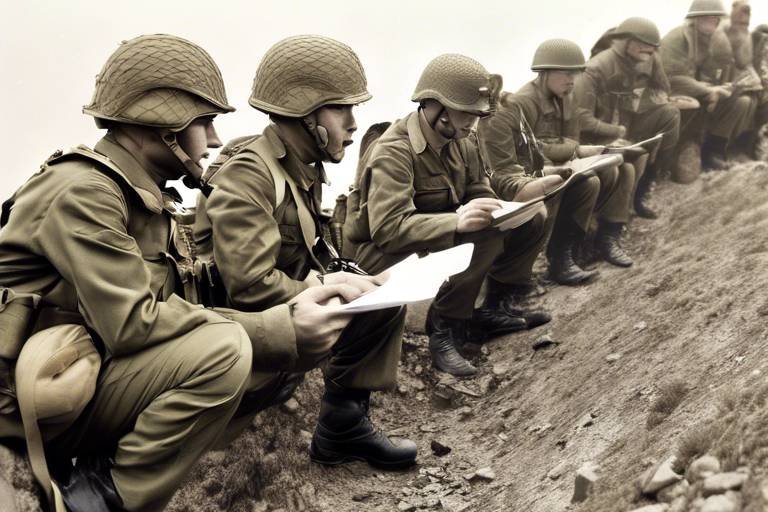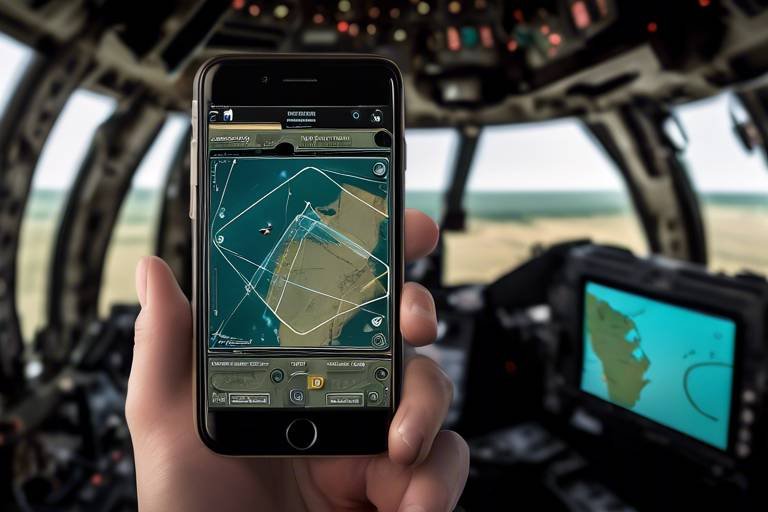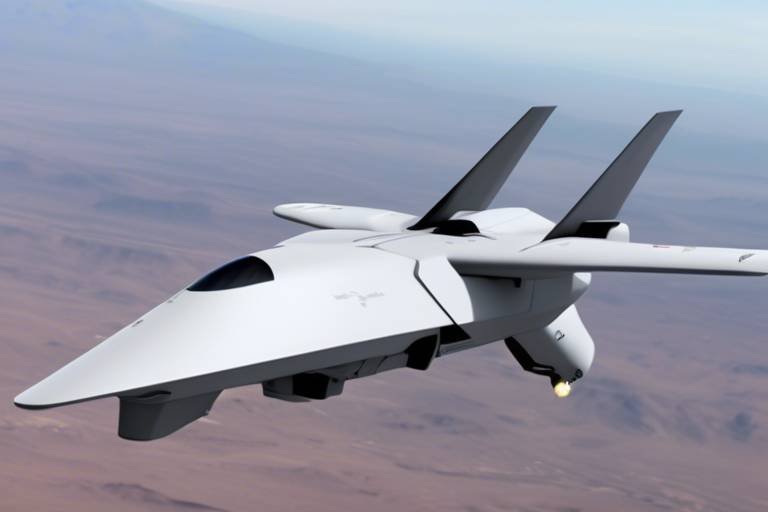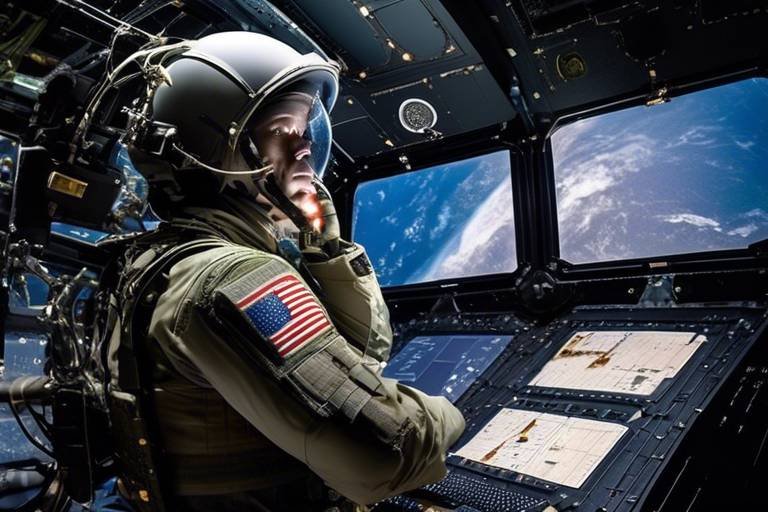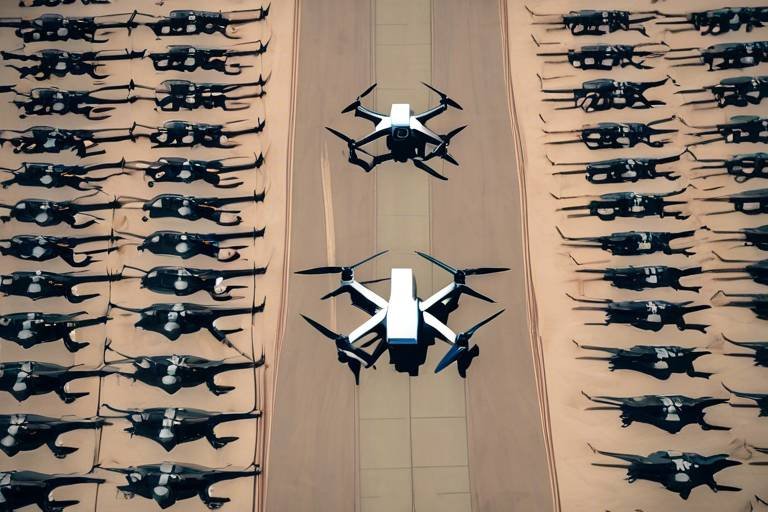The Evolution of Communication Protocols in Military Operations
In the ever-changing landscape of warfare, the ability to communicate effectively can mean the difference between victory and defeat. From the ancient days of smoke signals and drumbeats to the sophisticated digital networks of today, military communication protocols have undergone a remarkable transformation. This evolution not only reflects advancements in technology but also highlights the increasing complexity of military operations. As we delve into this fascinating journey, we will uncover how each stage of communication development has played a crucial role in enhancing operational efficiency and effectiveness throughout various eras of conflict.
The roots of military communication can be traced back to the earliest human societies, where messages were conveyed through rudimentary means. Signal flags, messengers on horseback, and even smoke signals served as the backbone of communication in ancient armies. These methods, while effective to some extent, were limited by distance and the speed of human travel. With the advent of the telegraph in the 19th century, a new era began. Suddenly, messages could be transmitted almost instantaneously over long distances, shaping the foundation of modern military communication. The introduction of the telegraph during the American Civil War was a game-changer, allowing commanders to relay orders and gather intelligence in real-time, thereby enhancing their strategic capabilities.
As we moved into the 20th century, technological innovations continued to revolutionize military communication. The introduction of radio technology marked a significant leap forward. In World War I, radio communication allowed for real-time updates and coordination among troops, fundamentally changing command and control structures. This leap was further amplified during World War II, where radio became a lifeline for military operations. The ability to communicate instantly across vast distances not only improved situational awareness but also enabled faster decision-making processes.
Radio technology brought a level of immediacy to military communication that was previously unattainable. Imagine a battlefield where commanders could instantly relay orders and receive reports from the front lines. This capability was revolutionary, transforming the dynamics of warfare. However, the introduction of radio communication did not come without its challenges. Early radio systems were susceptible to interference, and the lack of secure channels made them vulnerable to enemy eavesdropping. These limitations highlighted the need for more robust protocols to ensure the integrity and security of military communications.
The incorporation of radio communication into military operations altered traditional hierarchies and decision-making processes. Commanders were no longer isolated in their command posts; they could engage with troops in real-time, fostering a more dynamic and responsive command structure. This shift not only enhanced the speed of operations but also improved coordination among different units, leading to more cohesive strategies in combat scenarios. The ability to communicate swiftly and effectively allowed for a more agile military response, adapting to the fluid nature of warfare.
Despite its advantages, early radio communication faced significant challenges. Interference from environmental factors and technological limitations could disrupt transmissions, leading to confusion on the battlefield. Additionally, security concerns loomed large, as enemy forces could intercept radio communications, compromising operational secrecy. These vulnerabilities prompted military leaders to invest in developing more secure communication protocols, paving the way for advancements in encryption and secure transmission methods.
The emergence of satellite communication marked another pivotal moment in military communication evolution. With the ability to provide global reach, satellites allowed for improved coordination among forces deployed in diverse geographical locations. This capability was particularly evident in modern conflicts, where military operations often span vast distances and involve multinational coalitions. Satellite communication systems enabled real-time data sharing, enhancing situational awareness and operational effectiveness on a global scale.
As military communication systems have grown more complex, so too have the threats they face. Cybersecurity has become a critical concern, with military communication systems increasingly targeted by cyber attacks. Protecting these systems from hacking, espionage, and misinformation campaigns is essential to maintaining operational integrity and national security. The rise of advanced technologies has brought new vulnerabilities, making it imperative for military organizations to stay one step ahead of potential threats.
The threat landscape for military communication systems is diverse and constantly evolving. Cyber threats can come from state-sponsored actors, hacktivists, or even rogue individuals. The potential for hacking into communication networks poses a significant risk, as it can lead to compromised operations and sensitive information leaks. Misinformation campaigns can further exacerbate these risks, sowing confusion and undermining trust in military communications.
To safeguard military communications, various protective measures have been implemented. Encryption technologies play a vital role in securing data transmissions, ensuring that even if intercepted, the information remains unreadable to unauthorized parties. Additionally, secure networks and personnel training are essential components of a comprehensive cybersecurity strategy. By fostering a culture of security awareness and preparedness, military organizations can mitigate risks and enhance the resilience of their communication systems.
Looking ahead, the future of military communication protocols promises to be even more exciting. The integration of artificial intelligence and advanced encryption methods is set to enhance both security and efficiency in military operations. Furthermore, the potential for quantum communication could revolutionize the way military forces communicate, offering unprecedented levels of security. As technology continues to advance, so too will the strategies and protocols that underpin military communication, ensuring that armed forces remain effective in an increasingly complex world.
- What are the earliest forms of military communication? The earliest forms included signal flags, messengers, and smoke signals.
- How did radio communication change military operations? Radio allowed for real-time communication, enhancing command and control during conflicts.
- What cybersecurity measures are in place for military communications? Measures include encryption, secure networks, and personnel training to mitigate risks.
- What is the future of military communication? Future trends include the integration of AI, advanced encryption, and potential quantum communication technologies.

Historical Overview
The history of military communication is as rich and varied as the conflicts that have shaped our world. From the use of signal flags and messengers in ancient times to the sophisticated technologies we see today, the evolution of communication protocols has been pivotal in enhancing military operations. In the early days, armies relied on visual signals, such as flags and torches, to convey messages across distances. This method, while effective in clear weather, was limited by visibility and the speed at which messages could be transmitted. Imagine trying to communicate a crucial battle strategy to your troops using nothing but a flag—time-consuming and fraught with potential for misinterpretation!
As warfare evolved, so did the need for more reliable and faster communication methods. The introduction of the telegraph in the 19th century marked a significant turning point. For the first time, military leaders could send messages over long distances almost instantaneously. This innovation not only changed the pace of military operations but also laid the groundwork for future communication advancements. During the American Civil War, for instance, generals utilized telegraph lines to coordinate troop movements, demonstrating the profound impact of this technology on strategic planning.
With the dawn of the 20th century came even more revolutionary changes. The invention of the radio transformed military communication once again. Unlike the telegraph, which required wires, radio waves allowed for wireless communication, making it possible to transmit messages from moving vehicles and ships. This newfound mobility was a game changer during World War I and II, where real-time communication became essential for command and control. Commanders could now relay orders and receive updates from the front lines almost instantaneously, significantly enhancing operational effectiveness.
To illustrate the progression of military communication methods, here’s a brief overview:
| Era | Communication Method | Significance |
|---|---|---|
| Ancient Times | Signal Flags and Messengers | Limited by visibility; slow transmission |
| 19th Century | Telegraph | Instantaneous long-distance communication |
| 20th Century | Radio | Wireless communication; real-time updates |
As we moved further into the 20th century, the advent of satellite technology began to reshape military communication once again. Satellites provided a global reach that was previously unimaginable, allowing forces to coordinate operations in real-time, regardless of their geographical location. This advancement not only improved communication but also enhanced the ability to gather intelligence and execute complex operations across vast distances.
In conclusion, the historical evolution of communication protocols in military operations has been a journey of innovation and adaptation. Each advancement has brought with it new capabilities and challenges, shaping the way wars are fought and won. As we look back, we can appreciate how far we've come and how these developments have laid the foundation for the sophisticated military communication systems we rely on today.

Technological Advancements
The landscape of military communication has dramatically transformed over the years, thanks to significant . From the early days of sending messages via horseback to the sophisticated networks we rely on today, each innovation has played a crucial role in shaping how military operations are conducted. One of the pivotal moments in this evolution was the introduction of radio communication, which allowed for real-time exchanges of information over vast distances, fundamentally changing the dynamics of warfare.
As we moved further into the 20th century, the development of satellite technology marked another major leap forward. Imagine being able to communicate with troops stationed on the other side of the world, all in real-time! This capability not only enhanced operational coordination but also provided a level of situational awareness that was previously unimaginable. The ability to relay critical information instantly has proven invaluable, especially in complex combat scenarios where every second counts.
Moreover, the advent of the internet has revolutionized military communication protocols even further. With the integration of networked systems, military operations can now utilize advanced data-sharing capabilities, enabling forces to collaborate more effectively. This interconnectedness fosters a greater understanding of the battlefield, allowing for quicker decision-making and more agile responses to emerging threats.
However, with these advancements come new challenges. The reliance on technology in military communication has opened up vulnerabilities that adversaries can exploit. For instance, the increased use of satellite and internet-based communications has made military networks susceptible to cyber threats. As we look to the future, it is imperative that military organizations invest in robust cybersecurity measures to protect these vital communication channels from potential breaches.
In summary, the evolution of communication technologies in military operations has been nothing short of revolutionary. Each technological advancement has not only improved operational efficiency but has also redefined the very nature of warfare. As we continue to innovate, the challenge will be to harness these technologies while safeguarding against the risks they introduce.
- What are the key technological advancements in military communication?
Key advancements include radio communication, satellite technology, and internet-based systems, all of which have significantly enhanced operational capabilities. - How has radio communication changed military operations?
Radio communication allowed for real-time information exchange, improving command and control structures during conflicts like World War I and II. - What are the cybersecurity challenges faced by military communication systems?
Military communication systems face threats such as hacking, espionage, and misinformation campaigns, which can compromise national security. - What future trends are expected in military communication?
Future trends may include the integration of artificial intelligence, advanced encryption methods, and the potential for quantum communication to enhance security and efficiency.

Radio Communication
When we think about the evolution of military communication, radio technology stands out as a true game-changer. Imagine the chaos of World War I, where commanders relied heavily on runners and signal flags to relay messages across the battlefield. It was like trying to play a game of telephone in the middle of a storm! The introduction of radio during this time revolutionized the way military operations were conducted, allowing for real-time communication that was previously unimaginable.
During World War I, the military began to harness the power of radio waves to transmit messages. This innovation not only improved the speed at which information could be shared but also enhanced the overall effectiveness of military strategies. No longer did commanders have to wait for a messenger to traverse dangerous terrain; they could communicate instantly, making decisions on the fly. This shift was akin to moving from a horse-drawn carriage to a high-speed train—everything changed in terms of speed and efficiency.
In World War II, radio communication reached new heights. The use of shortwave radios and other advanced equipment enabled forces to maintain contact over vast distances, even amidst the chaos of battle. Commanders could coordinate air support, artillery strikes, and troop movements with unprecedented accuracy, significantly impacting the outcome of engagements. The ability to communicate across different branches of the military, such as the army, navy, and air force, fostered a level of collaboration that had never been seen before.
The integration of radio communication fundamentally altered the command structure within military operations. Before its widespread adoption, decisions were often made at a slower pace, with information trickling up and down the hierarchy. With radio, however, commanders at all levels could share and receive information instantly, creating a more dynamic and responsive command environment. This change allowed for a decentralized approach to decision-making, where lower-ranking officers could relay critical information directly to higher-ups, facilitating quicker responses to evolving battlefield conditions.
As a result, the traditional military hierarchy began to shift. Leadership styles evolved, with an emphasis on collaboration and rapid information exchange. This transformation not only improved operational efficiency but also fostered a sense of unity among troops, as they felt more connected to the overall mission. The radio became a lifeline, a tool that bridged the gap between commanders and soldiers, making everyone feel like part of a cohesive team working towards a common goal.
However, the rise of radio communication was not without its challenges. Early radio systems were often plagued by interference and security vulnerabilities. Imagine trying to have a private conversation in a crowded room filled with noise; that’s what military leaders faced with early radio technology. Interference from other signals could distort messages, leading to confusion and miscommunication on the battlefield.
Moreover, the lack of secure communication protocols made radio transmissions susceptible to interception by enemy forces. This vulnerability highlighted the need for more robust security measures. As a response, military organizations began to develop encryption techniques and other protective strategies to safeguard their communications. The evolution of radio communication thus became a continuous cycle of innovation, where advancements in technology were met with new challenges that required equally innovative solutions.
In conclusion, radio communication has played a pivotal role in shaping modern military operations. It has transformed the way information is shared, the dynamics of command structures, and the overall effectiveness of military strategies. As we look back on this evolution, it’s clear that the journey of radio communication is a testament to human ingenuity and the relentless pursuit of improvement in the face of adversity.
- What was the main advantage of radio communication in military operations?
Radio communication allowed for real-time information exchange, enabling faster decision-making and improved coordination on the battlefield. - How did radio technology impact military hierarchies?
It facilitated a more decentralized command structure, allowing lower-ranking officers to communicate directly with higher-ups, enhancing operational efficiency. - What were some challenges faced with early radio communication?
Challenges included interference from other signals, security vulnerabilities, and the need for more robust encryption methods.
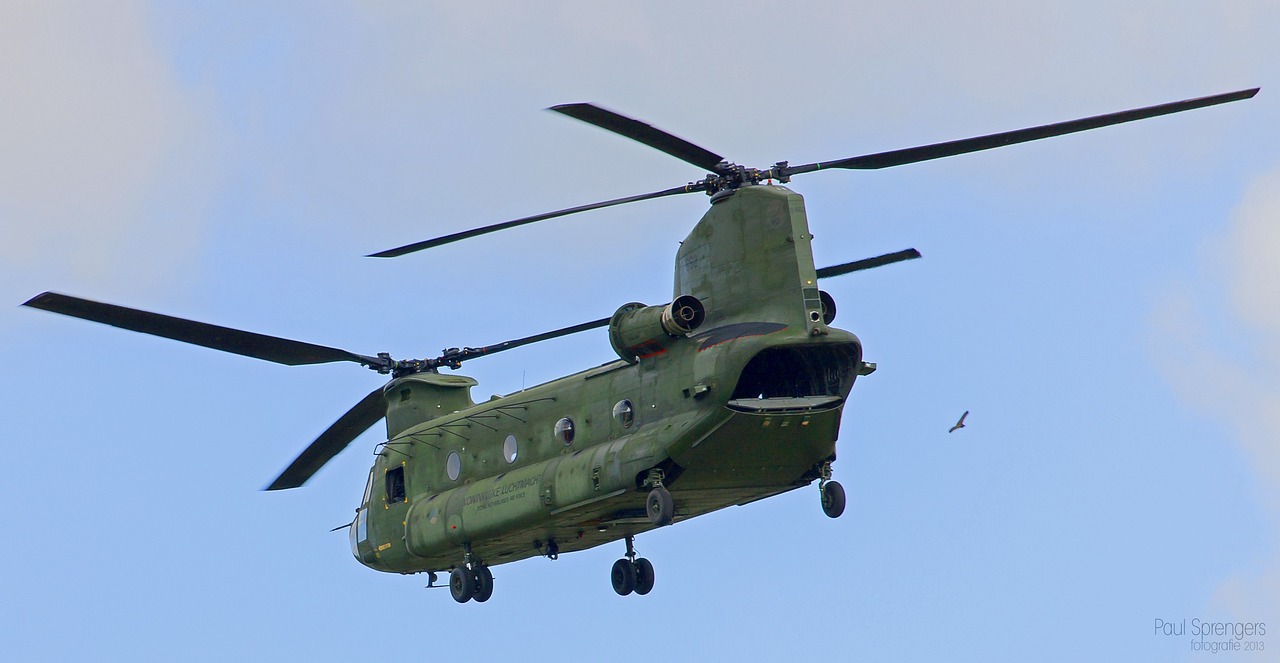
Impact on Command Structure
The introduction of radio communication during the early 20th century marked a transformative shift in military command structures. Before radio technology, communication was often slow and cumbersome, relying heavily on written messages delivered by couriers or visual signals like flags. The advent of radio allowed for real-time interaction between commanders and troops, fundamentally altering how decisions were made on the battlefield. Imagine a chess game where the players can only move their pieces after receiving a note from their opponent; the game would be slow and predictable. Now, envision a scenario where players can communicate instantly—this is the essence of the revolution that radio communication brought to military operations.
One of the most profound effects of radio technology was its ability to flatten hierarchies. Commanders at various levels could now communicate directly with their subordinates, bypassing traditional chains of command. This shift fostered a culture of rapid decision-making and responsiveness, which is crucial in the fast-paced environment of combat. For instance, during World War II, commanders could relay orders to frontline units in seconds rather than hours, enabling a more dynamic and flexible approach to warfare.
However, this newfound speed came with its own set of challenges. As communication became more immediate, the potential for miscommunication also increased. In the heat of battle, messages could be misinterpreted or lost, leading to critical errors. Moreover, the reliance on radio communication introduced vulnerabilities; enemy forces could intercept radio signals, leading to the potential for strategic disadvantages. It was not uncommon for military leaders to face situations where their plans were compromised due to enemy eavesdropping.
To mitigate these risks, military organizations began to develop protocols and codes to secure their communications. The establishment of standard operating procedures for radio use became essential. Commanders had to train their personnel not only in the technical aspects of radio operation but also in the importance of operational security. This included using
- Encrypted messages to protect sensitive information
- Code words to ensure clarity and reduce the risk of interception
- Regular drills to familiarize troops with communication protocols
In summary, radio communication revolutionized military command structures by enabling faster, more direct communication and fostering a more responsive military culture. While it introduced new challenges, the ability to communicate instantly transformed how commands were issued and executed, paving the way for modern military operations that rely heavily on advanced communication technologies. As we look to the future, the lessons learned from the impact of radio communication will continue to shape the evolution of military command structures.
Q: How did radio communication change military strategies?
A: Radio communication allowed for real-time updates and orders, enabling more flexible and adaptive military strategies, which was crucial during fast-paced combat scenarios.
Q: What were some challenges associated with early radio communication?
A: Early radio communication faced challenges such as signal interference, interception by enemy forces, and the potential for miscommunication, which necessitated the development of secure protocols.
Q: How did military organizations ensure the security of their radio communications?
A: Military organizations implemented encryption, code words, and regular training to protect their communications from interception and misinterpretation.
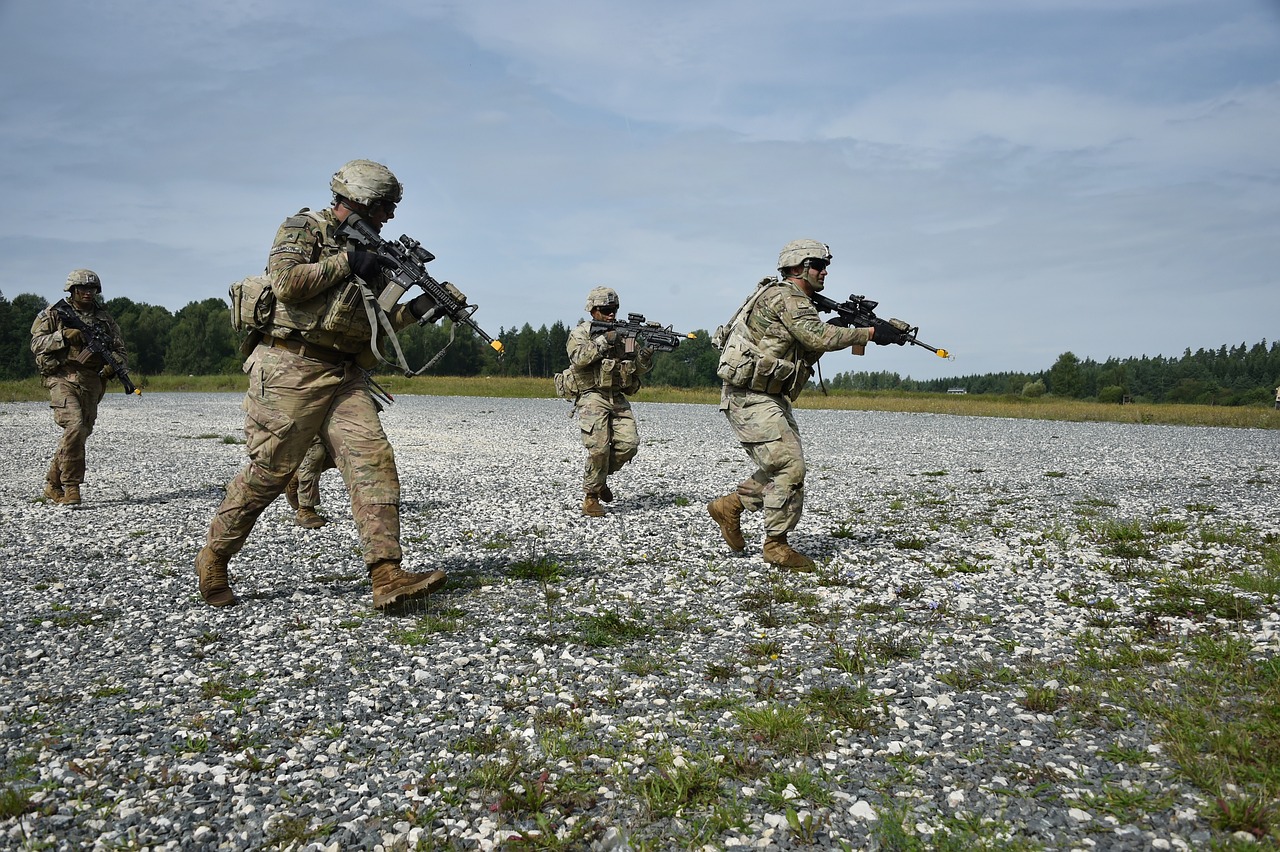
Challenges of Radio Use
While radio communication was a groundbreaking advancement in military operations, it was not without its challenges. One of the most significant issues was interference. In the chaotic environment of battle, multiple radio transmissions could create a cacophony of signals, leading to confusion and miscommunication. Imagine trying to hear a friend shout your name at a crowded concert; that’s the kind of chaos that soldiers faced when multiple units were trying to communicate simultaneously. This interference could undermine the very purpose of using radio technology, which was to enhance real-time communication.
Moreover, early radio systems were notoriously vulnerable to interception. Adversaries could easily listen in on radio frequencies, gathering crucial intelligence that could turn the tide of battle. This vulnerability necessitated the development of more secure communication protocols, but not all military units had access to the latest technologies. As a result, some forces continued to use outdated systems, leaving them exposed to enemy eavesdropping. The situation was akin to sending a postcard instead of a sealed letter; anyone could read it, and that could have dire consequences on the battlefield.
Another challenge was the training and expertise required to operate radio equipment effectively. Not every soldier was trained to use the technology, leading to a reliance on a small number of specialists. This situation created bottlenecks in communication, especially in urgent scenarios where quick decisions were critical. Imagine a fire alarm going off, but only a few people know how to operate the fire extinguishers; the delay in action could lead to disastrous results.
Additionally, the physical environment posed its own set of challenges. Terrain and weather conditions could severely impact radio signal quality. Dense forests, mountains, or urban landscapes could obstruct signals, while adverse weather conditions like storms or heavy rain could disrupt communications entirely. In such scenarios, soldiers had to rely on alternative methods, such as runners or signal flags, which were not as efficient as radio communication. This unpredictability was a constant reminder of the limitations of the technology they depended upon.
In summary, while radio communication revolutionized military operations, it came with its own set of challenges. Interference, vulnerability to interception, the need for specialized training, and environmental factors all posed significant hurdles. As military leaders recognized these challenges, they began to seek solutions that would enhance the reliability and security of their communication systems, paving the way for future innovations.
- What were the primary challenges of early radio communication in military operations?
Early radio communication faced challenges such as interference from multiple transmissions, vulnerability to interception, the need for specialized training, and environmental factors that could disrupt signals.
- How did military leaders address the vulnerabilities of radio communication?
Military leaders sought to develop more secure communication protocols and invested in better training for personnel to operate radio equipment effectively.
- What impact did terrain have on radio communication during military operations?
Terrain such as dense forests, mountains, or urban landscapes could obstruct radio signals, while adverse weather conditions could further disrupt communication, forcing soldiers to revert to less efficient methods.

Satellite Communication
When we think about the vastness of the battlefield, it’s easy to feel overwhelmed. Just imagine coordinating troops spread across multiple continents, each facing different terrains and challenges. This is where comes into play, revolutionizing military operations by providing a seamless link between forces, no matter where they are on the globe. The introduction of satellites has not just been a game-changer; it has completely transformed the way military communication is conducted, allowing for real-time data exchange and strategic planning.
Before the advent of satellite technology, military operations relied heavily on ground-based communication systems, which often faced limitations due to geographical barriers and infrastructure challenges. With the launch of the first communications satellites in the 1960s, military forces gained access to a whole new level of connectivity. These satellites orbiting the Earth provide a global reach, enabling communication with troops stationed in remote areas, ships at sea, and aircraft in the sky. This capability is crucial for ensuring that commanders can maintain situational awareness and make informed decisions swiftly.
One of the standout features of satellite communication is its ability to facilitate real-time communication. Imagine a commander on the ground needing immediate intelligence from a reconnaissance aircraft. With satellite communication, this information can be transmitted almost instantaneously. This capability has proven vital in various military operations, allowing for quicker responses to evolving situations on the battlefield. The integration of satellite systems has also enhanced coordination among allied forces, enabling them to operate more effectively together.
Moreover, satellite communication supports a wide array of applications beyond simple voice communication. It enables the transmission of data, video, and imagery, which are crucial for modern warfare. For instance, surveillance data collected by drones can be sent directly to command centers via satellite links, providing real-time insights into enemy movements. This level of connectivity ensures that military leaders can adapt their strategies based on the most current information available.
However, the benefits of satellite communication don’t come without challenges. As military operations become increasingly reliant on these systems, they also become vulnerable to various threats. The potential for signal jamming, interception, and even cyber attacks poses significant risks to operational integrity. As a result, military organizations must continuously invest in advanced technologies and strategies to protect their satellite communications. This includes implementing robust encryption protocols and developing countermeasures to mitigate potential threats.
In summary, satellite communication has emerged as a cornerstone of modern military operations, providing unparalleled connectivity and enhancing operational efficiency. As technology continues to evolve, the role of satellite communication in the military will only grow, enabling forces to adapt to new challenges and maintain a strategic advantage in an increasingly complex global landscape.
- What is satellite communication in military operations?
Satellite communication refers to the use of satellite technology to facilitate communication between military forces, providing global connectivity and real-time data exchange. - How does satellite communication enhance military operations?
It enhances military operations by enabling real-time communication, data transmission, and coordination among forces, regardless of their geographical locations. - What are the challenges associated with satellite communication?
Challenges include vulnerabilities to signal jamming, interception, and cyber attacks, which necessitate robust security measures to protect military communications. - What technologies are used to secure military satellite communication?
Technologies such as encryption, secure networks, and advanced cybersecurity protocols are employed to safeguard military satellite communications.

Cybersecurity in Military Communication
In today's digital age, the significance of cybersecurity in military communication cannot be overstated. As military operations increasingly rely on complex networks and advanced technologies, the vulnerability to cyber threats has escalated dramatically. Imagine a battlefield where information flows seamlessly, yet a hidden enemy lurks in the shadows, ready to exploit weaknesses in communication systems. This scenario is not just a possibility; it's a reality that military strategists must contend with every day.
As we delve deeper into the realm of military communication, we must first understand the threat landscape. Military communication systems face a myriad of cyber threats, including:
- Hacking: Unauthorized access to secure networks can lead to the theft of sensitive information and operational plans.
- Espionage: State-sponsored actors may infiltrate communication systems to gather intelligence, compromising national security.
- Misinformation Campaigns: Disinformation can disrupt communication, sow confusion among troops, and undermine trust in leadership.
These threats are not just theoretical; they pose real risks to operational integrity. For instance, during recent conflicts, there have been documented cases where hackers successfully breached military communications, leading to compromised missions and strategic setbacks. The stakes are incredibly high, and the consequences of inadequate cybersecurity can be catastrophic.
To counter these challenges, military organizations are adopting a range of protective measures designed to fortify their communication systems. Some of the key strategies include:
- Encryption: Encrypting data ensures that even if intercepted, the information remains unreadable to unauthorized users.
- Secure Networks: The implementation of secure, isolated networks minimizes the risk of exposure to external threats.
- Personnel Training: Regular training sessions for military personnel on cybersecurity best practices can significantly reduce human error, which is often the weakest link in security protocols.
Moreover, as technology continues to evolve, so too do the methods employed by adversaries. This necessitates a proactive approach to cybersecurity, where military communication protocols are regularly updated to address emerging threats. It's akin to a game of chess, where each side must anticipate the other's moves and adapt strategies accordingly.
Looking ahead, the integration of advanced technologies such as artificial intelligence and machine learning into military communication systems holds great promise. These innovations can enhance threat detection and response times, creating a more resilient communication infrastructure. Additionally, the potential for quantum communication offers a new frontier in secure military communications, leveraging the principles of quantum mechanics to achieve unparalleled levels of security.
In conclusion, the landscape of military communication is fraught with challenges, but with the right cybersecurity measures in place, military forces can enhance their operational effectiveness. As we continue to navigate the complexities of modern warfare, prioritizing cybersecurity will be essential to safeguarding our communication systems and ensuring mission success.
- What are the main cyber threats to military communication? The primary threats include hacking, espionage, and misinformation campaigns.
- How does encryption protect military communications? Encryption makes data unreadable to unauthorized users, ensuring that even if intercepted, sensitive information remains secure.
- What role does personnel training play in cybersecurity? Training helps reduce human error, which is often a significant vulnerability in security protocols.
- What future technologies could enhance military communication security? Technologies like artificial intelligence and quantum communication are expected to revolutionize military cybersecurity.

Threat Landscape
The landscape of threats faced by military communication systems has evolved dramatically over the years, especially with the increasing reliance on technology. In today's digital age, military operations are not just at risk from traditional adversaries but also from a myriad of cyber threats that can compromise operational integrity. Imagine a battlefield where enemy forces are not only physically present but also lurking in the shadows of cyberspace, ready to exploit vulnerabilities. This duality of threats makes it imperative for military organizations to remain vigilant and proactive.
One of the most pressing concerns is hacking. Cybercriminals and state-sponsored hackers constantly seek to infiltrate military networks, aiming to steal sensitive information or disrupt communication channels. The consequences of a successful hack can be catastrophic, potentially leading to mission failures or even loss of life. Furthermore, the rise of espionage has transformed into a digital endeavor. Adversaries now employ sophisticated techniques to gather intelligence, monitor communications, and even manipulate data to sow confusion among military ranks.
Moreover, misinformation campaigns pose a significant threat to military operations. In an age where information spreads like wildfire through social media and online platforms, the potential for false narratives to influence public perception and operational effectiveness is alarming. These campaigns can undermine trust in military leadership and create discord among troops, ultimately affecting morale and cohesion.
To illustrate the variety of cyber threats faced by military communication systems, consider the following table:
| Type of Threat | Description | Potential Impact |
|---|---|---|
| Hacking | Unauthorized access to military networks to steal or manipulate data. | Loss of sensitive information, mission failure. |
| Espionage | Covert operations to gather intelligence on military strategies and capabilities. | Compromised operational security, strategic disadvantages. |
| Misinformation Campaigns | Deliberate spread of false information to confuse or mislead. | Undermined trust, reduced morale, operational chaos. |
As military forces navigate this complex threat landscape, they must adopt a multifaceted approach to cybersecurity. This includes investing in advanced technologies, conducting regular security assessments, and fostering a culture of cybersecurity awareness among personnel. After all, the human element is often the weakest link in any security protocol. By understanding the potential threats and implementing robust protective measures, military organizations can safeguard their communication systems and maintain operational effectiveness in an increasingly hostile digital environment.
- What are the main cyber threats to military communication systems?
The main threats include hacking, espionage, and misinformation campaigns, all of which can significantly impact military operations. - How can military organizations protect against these threats?
By investing in advanced cybersecurity technologies, conducting regular training for personnel, and implementing strict security protocols. - Why is misinformation a growing concern?
Misinformation can quickly spread through social media, influencing public perception and undermining military operations.
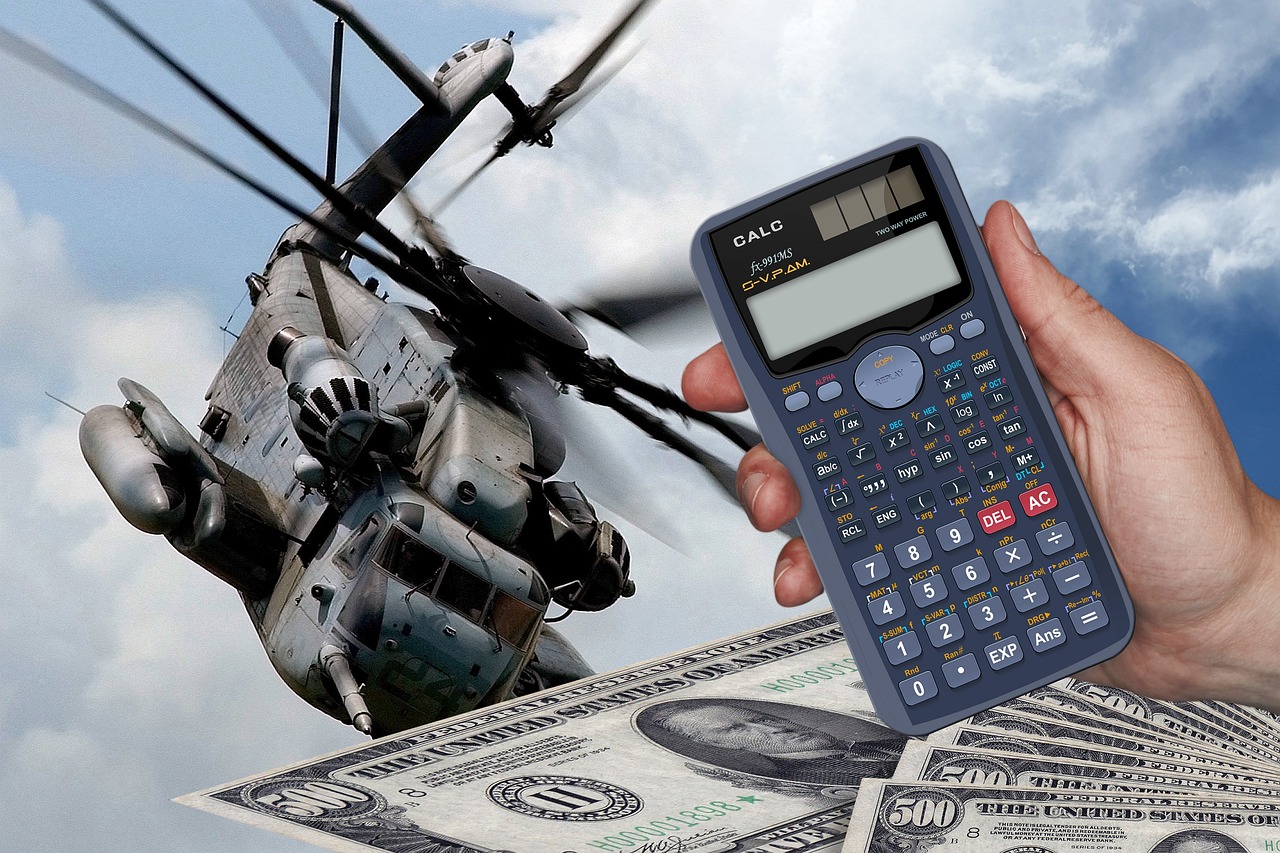
Protective Measures
In the realm of military communication, safeguarding information is paramount. With the rise of cyber threats, the implementation of has become a crucial aspect of ensuring operational integrity. Military organizations worldwide are investing heavily in advanced technologies and strategies designed to mitigate risks associated with potential breaches. This includes the use of encryption, which transforms readable data into a coded format, making it nearly impossible for unauthorized entities to decipher the information. Just like a secret language shared between trusted friends, encryption ensures that sensitive communications remain confidential.
Another vital component of protective measures is the establishment of secure networks. These networks are specifically designed to withstand cyber attacks, offering a fortified environment for military communications. Imagine a well-guarded fortress; only those with the right credentials can enter, ensuring that the information within remains protected. Secure networks are fortified with firewalls, intrusion detection systems, and continuous monitoring to detect and respond to threats in real-time.
Additionally, personnel training is a cornerstone of military cybersecurity. Even the most advanced technology can falter if the individuals operating it are not adequately prepared. Regular training sessions help military personnel recognize potential threats, understand the importance of security protocols, and respond effectively to incidents. This is akin to teaching a soldier how to use their weapon; without proper training, even the best equipment can become ineffective. Through simulations and real-world scenarios, military staff can develop the skills necessary to protect sensitive information.
Moreover, collaboration with cybersecurity experts and organizations plays a significant role in enhancing protective measures. By sharing knowledge and resources, military forces can better anticipate and counteract emerging threats. This collaborative approach is similar to a team of detectives pooling their resources to solve a case—together, they can uncover insights that might be missed individually. As cyber threats evolve, so too must the strategies employed to combat them.
To summarize, the protective measures in military communication encompass a multifaceted approach that includes encryption, secure networks, personnel training, and collaboration with experts. Each element works in harmony to create a robust defense against cyber threats, ensuring that military operations remain efficient and secure. Just as a well-oiled machine operates seamlessly, these measures collectively safeguard the lifeblood of military communication.
- What is military encryption?
Military encryption is the process of converting sensitive information into a coded format to prevent unauthorized access and ensure confidentiality during communication.
- How do secure networks work?
Secure networks utilize various technologies, such as firewalls and intrusion detection systems, to create a protective barrier against cyber threats, ensuring that only authorized users can access sensitive data.
- Why is personnel training important in cybersecurity?
Personnel training is essential because it equips military staff with the knowledge and skills to recognize threats and respond appropriately, reducing the risk of security breaches.
- What role does collaboration play in military cybersecurity?
Collaboration allows military organizations to share insights and resources, enhancing their ability to anticipate and counteract potential cyber threats effectively.
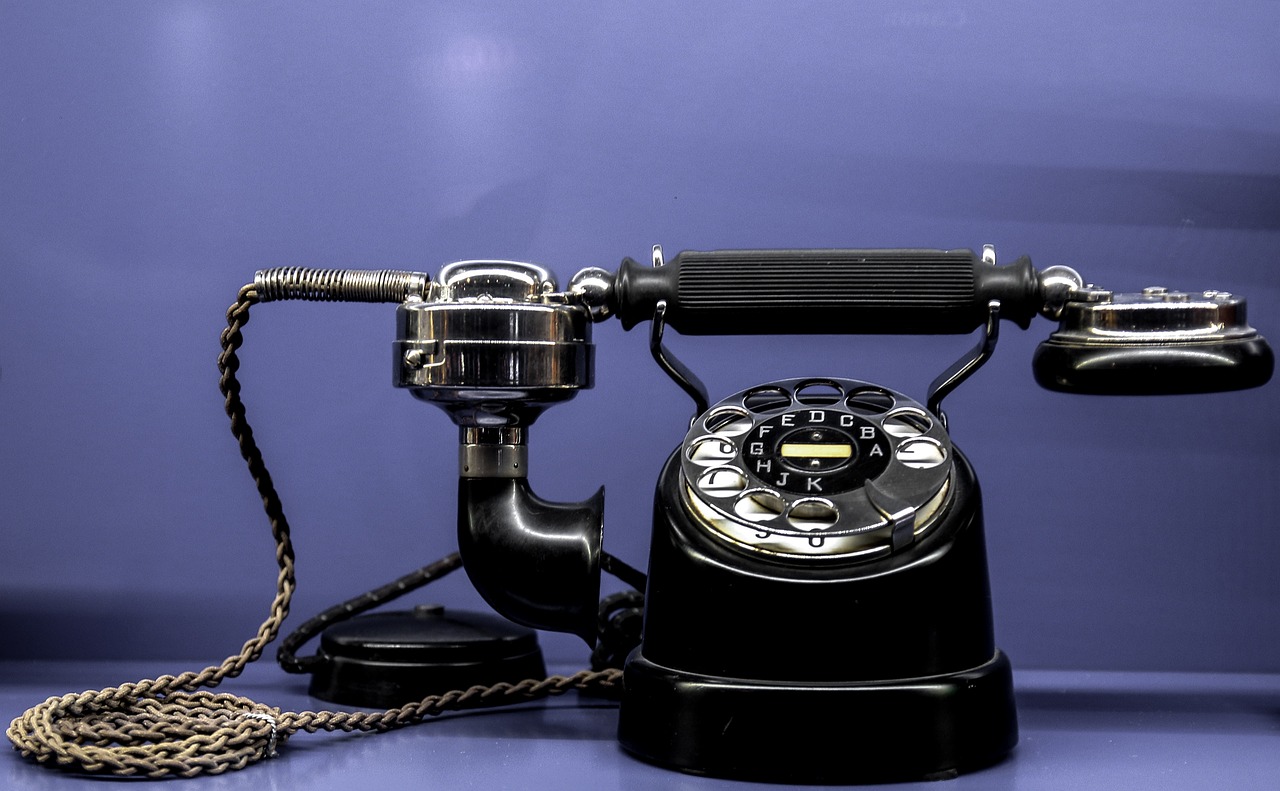
The Future of Military Communication Protocols
The landscape of military communication is on the brink of a significant transformation, driven by rapid advancements in technology. As we look ahead, several trends are poised to redefine how armed forces communicate, collaborate, and operate. The integration of artificial intelligence (AI) into communication protocols is one of the most exciting prospects. Imagine AI systems capable of analyzing vast amounts of data in real-time, providing commanders with actionable insights that can influence critical decisions on the battlefield. This level of intelligence could enhance situational awareness, streamline operations, and ultimately save lives.
Another crucial area of development is the advancement of encryption methods. As cyber threats become more sophisticated, military communication systems must evolve to counteract potential vulnerabilities. Future protocols will likely incorporate quantum encryption, which promises unparalleled security by leveraging the principles of quantum mechanics. This technology could render traditional hacking methods obsolete, ensuring that sensitive information remains protected from prying eyes.
Moreover, the potential for quantum communication is a game-changer. Imagine a world where information can be transmitted instantly and securely, no matter the distance. Quantum communication could facilitate real-time coordination among forces deployed globally, breaking down geographical barriers and enabling seamless collaboration. This would not only enhance operational efficiency but also improve response times during critical missions.
In addition to these technological advancements, the future of military communication will also emphasize interoperability. As military operations increasingly involve coalition forces from various nations, the ability to communicate across different systems and platforms becomes paramount. Future protocols will need to prioritize compatibility and standardization, enabling seamless integration of diverse communication technologies. This interoperability will enhance joint operations, fostering collaboration and unity among allied forces.
Furthermore, as the military embraces Internet of Things (IoT) technologies, the potential for smart devices to enhance communication capabilities is immense. Imagine a battlefield where drones, sensors, and other connected devices share real-time data with command centers and troops on the ground. This interconnectedness could lead to a more dynamic and responsive military operation, where decisions are made based on real-time information rather than outdated reports.
However, with these advancements come challenges. The reliance on digital communication opens up new avenues for cyber threats, making cybersecurity a top priority. As military forces adopt more sophisticated communication technologies, they must also invest in robust cybersecurity measures to protect their systems from potential breaches. This dual focus on innovation and security will be critical in ensuring that military communication remains effective and secure in the face of emerging threats.
In summary, the future of military communication protocols is bright, filled with opportunities for enhanced efficiency, security, and collaboration. By leveraging cutting-edge technologies such as AI, quantum encryption, and IoT, military forces can revolutionize their communication strategies, ensuring they remain agile and responsive in an ever-evolving battlefield.
- What role does artificial intelligence play in military communication?
AI can analyze data in real-time, providing insights that enhance decision-making and situational awareness on the battlefield. - How will quantum encryption improve military communication?
Quantum encryption offers unparalleled security by utilizing quantum mechanics, making it nearly impossible for hackers to breach communication systems. - What is the significance of interoperability in military operations?
Interoperability allows different military forces to communicate effectively, enhancing collaboration and coordination during joint operations. - How does the Internet of Things impact military communication?
IoT technologies enable smart devices to share real-time data, leading to more dynamic and responsive military operations. - What challenges do military communication systems face in the future?
Increased reliance on digital communication opens up vulnerabilities to cyber threats, necessitating robust cybersecurity measures.
Frequently Asked Questions
- What are the earliest forms of communication used in military operations?
In the early days of military operations, communication relied heavily on signal flags, messengers, and drums. These methods, while effective for their time, had limitations in speed and distance, leading to the development of more advanced systems like the telegraph.
- How did radio technology change military communication?
Radio technology revolutionized military communication during World War I and II by enabling real-time communication between command and troops. This innovation significantly improved command structures and operational efficiency, allowing for quicker decision-making on the battlefield.
- What challenges did early radio communication face?
Early radio communication faced several challenges, including interference, security vulnerabilities, and limited range. These issues prompted military leaders to seek more secure and reliable communication protocols, leading to advancements in technology and tactics.
- What role does satellite communication play in modern military operations?
Satellite communication provides global reach and enhanced coordination for military forces. It allows for effective communication across diverse geographical locations, ensuring that units can operate seamlessly, regardless of their deployment area.
- What are the main cyber threats to military communication systems?
Military communication systems face a variety of cyber threats, including hacking, espionage, and misinformation campaigns. These threats can compromise operational integrity and national security, making cybersecurity a top priority.
- What protective measures are implemented to safeguard military communications?
To protect military communications, various strategies are employed, such as encryption, secure networks, and personnel training. These measures help mitigate risks and ensure that communication remains secure against potential threats.
- What does the future hold for military communication protocols?
The future of military communication protocols is likely to involve the integration of artificial intelligence, advanced encryption methods, and even quantum communication. These advancements aim to enhance security, efficiency, and overall operational capabilities in military contexts.

